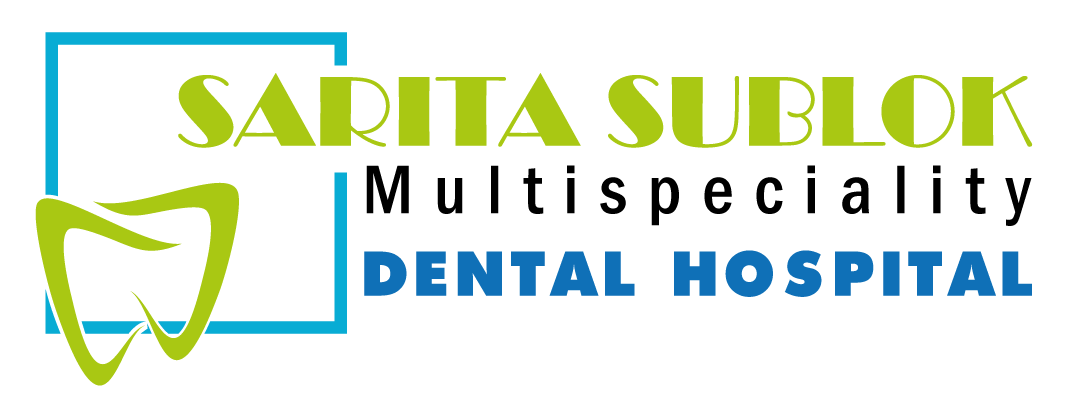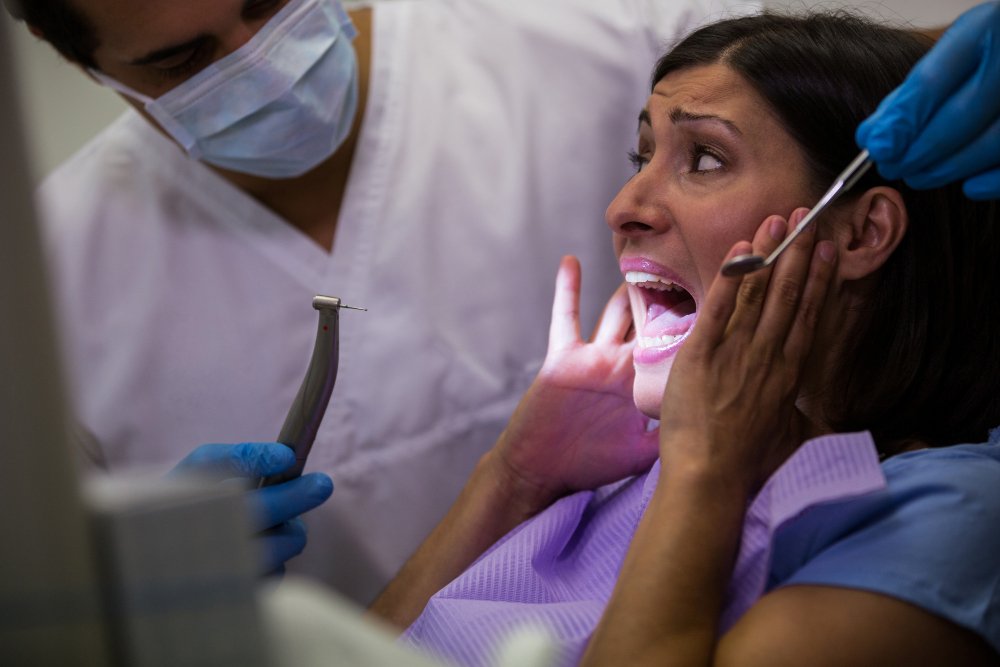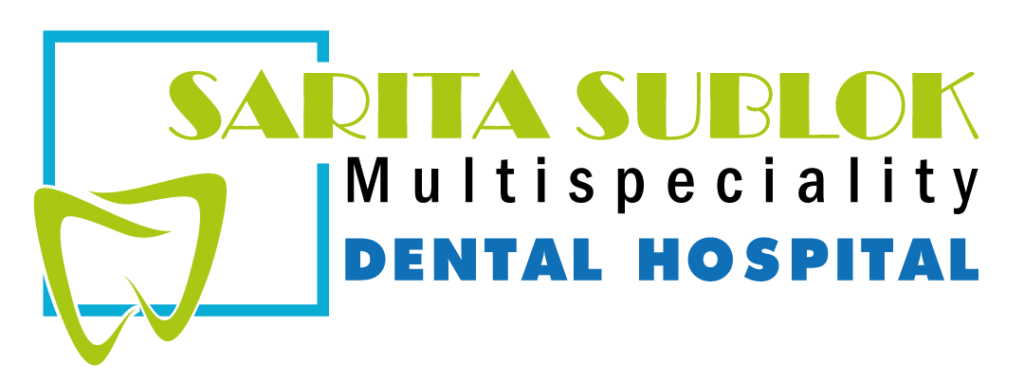Tooth whitening has become increasingly popular in recent years, as more individuals seek to achieve brighter, whiter smiles. Whether due to stains from food and beverages, aging, or other factors, tooth discoloration can impact one’s confidence and self-esteem. Tooth whitening offers a non-invasive solution to enhance smile aesthetics and restore a youthful, radiant appearance. In this article, we delve into the world of tooth whitening, exploring the techniques, benefits, and considerations associated with this transformative dental procedure. Best Dental Hospital in Dilshad Garden To Know More About It Please Click Here Understanding Tooth Whitening Tooth whitening, also known as bleaching, is a cosmetic dental procedure designed to lighten the color of teeth and remove stains and discoloration. It involves the application of whitening agents to the tooth surfaces, which penetrate the enamel and break down pigmented molecules, resulting in a brighter, more vibrant smile. Types of Tooth Whitening There are several methods of tooth whitening available, including Benefits of Tooth Whitening Best Dental Hospital in Dilshad Garden Tooth whitening offers numerous benefits, including Considerations and Precautions: While tooth whitening is generally safe and effective, there are some considerations and precautions to keep in mind: To Know More About It Please Click Here Conclusion Tooth whitening is a popular cosmetic dental procedure that offers numerous benefits, including enhanced smile aesthetics, improved confidence, and a more youthful appearance. Whether performed in-office by a dental professional or at home using customized kits, tooth whitening can help individuals achieve the bright, radiant smile they desire. By understanding the various whitening options available and consulting with a dental professional, individuals can make informed decisions about their oral health and cosmetic goals. With tooth whitening, illuminating smiles has never been easier or more accessible.Best Dental Hospital in Dilshad Garden
Understanding TMJ Disorders Causes Symptoms and Treatment Options.
Temporomandibular joint (TMJ) disorders encompass a range of conditions that affect the jaw joint and surrounding muscles, leading to pain, discomfort, and dysfunction. These disorders can significantly impact a person’s quality of life, affecting their ability to eat, speak, and even sleep comfortably. In this article, we delve into the complexities of TMJ disorders, exploring their causes, symptoms, diagnosis, and available treatment options. Understanding TMJ Disorders The temporomandibular joint (TMJ) acts as a hinge that connects the jawbone to the skull, facilitating jaw movement for activities such as chewing, speaking, and yawning. TMJ disorders occur when there is dysfunction or damage to the TMJ and associated muscles, ligaments, and cartilage. While the exact causes of TMJ disorders are often multifactorial, contributing factors may include: Symptoms of TMJ Disorders TMJ disorders can manifest in a variety of symptoms, which may vary in severity and duration. Common signs and symptoms of TMJ disorders include: Diagnosis and Treatment Options: Diagnosing TMJ disorders typically involves a comprehensive evaluation by a healthcare professional, which may include a physical examination, dental imaging (such as X-rays or MRI), and assessment of symptoms and medical history. Treatment options for TMJ disorders aim to alleviate symptoms, improve jaw function, and address underlying causes. Depending on the severity and nature of the condition, treatment modalities may include: Conclusion: TMJ disorders are complex conditions that can cause significant discomfort and impairment of jaw function. However, with proper diagnosis and management, many individuals with TMJ disorders can find relief from their symptoms and improve their quality of life. By understanding the causes, symptoms, and treatment options for TMJ disorders, healthcare professionals can provide effective care and support for patients affected by this common condition.
Advancements in Oral Care: Exploring the Benefits of Laser Dentistry.
In recent years, laser technology has revolutionized various fields of medicine, including dentistry. Laser dentistry offers a minimally invasive, precise, and efficient alternative to traditional dental procedures, providing patients with a more comfortable and convenient experience. In this article, we will delve into the world of laser dentistry, exploring its applications, benefits, and potential impact on the future of oral healthcare. To Know More About It Please Click Here Understanding Laser Dentistry Laser dentistry involves the use of advanced laser technology to perform a wide range of dental procedures with greater precision and accuracy. Dental lasers emit concentrated beams of light energy that can be used to reshape or remove tissue, target bacteria, and promote healing. Different types of lasers are used in dentistry, including diode lasers, erbium lasers, and carbon dioxide (CO2) lasers, each with specific applications and benefits. Applications of Laser Dentistry Laser dentistry can be used to address various dental concerns and perform a multitude of procedures, including: Benefits of Laser Dentistry The use of lasers in dentistry offers several advantages for both patients and dental professionals, including: Future Implications As laser technology continues to evolve, the future of laser dentistry holds great promise for advancing oral healthcare. Researchers are exploring new applications for lasers in areas such as tissue regeneration, nerve regeneration, and drug delivery, which could potentially revolutionize the treatment of oral diseases and conditions. To Know More About It Please Click Here Conclusion Laser dentistry represents a significant advancement in the field of oral healthcare, offering patients a safer, more comfortable, and efficient alternative to traditional dental procedures. With its wide range of applications and numerous benefits, laser dentistry has the potential to transform the way dental care is delivered, providing patients with improved outcomes and a more positive dental experience. As technology continues to advance, laser dentistry is poised to play an increasingly prominent role in the future of oral healthcare.
Orthodontic Braces: Transforming Smiles, Enhancing Lives.
Orthodontic braces have long been synonymous with achieving straighter teeth and a more harmonious smile. These dental appliances, consisting of brackets, wires, and bands, are instrumental in correcting misalignments, bite irregularities, and other orthodontic issues. Beyond cosmetic benefits, orthodontic braces play a crucial role in improving oral health, enhancing facial aesthetics, and boosting self-confidence. In this article, we delve into the intricacies of orthodontic braces, exploring their evolution, components, benefits, and modern advancements. To Know More About It Please Click Here Evolution of Orthodontic Braces The history of orthodontic braces dates back centuries, with early attempts at teeth alignment documented as far back as ancient Egypt. However, significant advancements in orthodontics occurred in the 18th and 19th centuries, driven by pioneering dentists such as Pierre Fauchard and Edward Angle. Fauchard introduced the bandeau, a precursor to modern braces, while Angle revolutionized orthodontic treatment with the development of the edgewise appliance and standardized orthodontic principles. Components of Orthodontic Braces Orthodontic braces consist of several components, each playing a crucial role in the alignment and movement of teeth: Benefits of Orthodontic Braces Orthodontic braces offer numerous benefits beyond cosmetic enhancement: Modern Advancements in Orthodontics In recent years, orthodontics has witnessed remarkable advancements, ushering in new technologies and treatment modalities to enhance patient experience and outcomes. Some notable advancements include: To Know More About It Please Click Here Conclusion: Orthodontic braces have evolved from humble beginnings to become a cornerstone of modern dentistry, offering transformative benefits for patients of all ages. Whether correcting misalignments, enhancing oral health, or boosting self-confidence, braces play a vital role in shaping smiles and improving lives. With ongoing advancements in technology and treatment modalities, the future of orthodontics holds exciting promise, ensuring that patients continue to benefit from innovative solutions for achieving beautiful, healthy smiles.
Dental Implants: Restoring Smiles and Confidence with Permanent Solutions.
Dental implants have revolutionized modern dentistry by providing a durable and natural-looking solution for replacing missing teeth. Unlike traditional dentures or bridges, dental implants offer a permanent option that restores both function and aesthetics, allowing individuals to regain confidence in their smiles and oral health. In this article, we explore the benefits, processes, and advancements in dental implant technology, highlighting their transformative impact on patients’ lives. To Know More About It Please Click Here Understanding Dental Implants: Dental implants are titanium posts surgically implanted into the jawbone to serve as artificial tooth roots. These implants provide a stable foundation for attaching custom-made prosthetic teeth, such as crowns, bridges, or dentures. Dental implants mimic the structure of natural teeth, anchoring securely into the jawbone and preserving bone density, which can deteriorate following tooth loss. The Dental Implant Process: The dental implant process typically involves several stages: Benefits of Dental Implants Advancements in Dental Implant Technology: Advancements in dental implant technology have led to innovations that enhance treatment outcomes and patient experience. Some notable advancements include: To Know More About It Please Click Here Conclusion: Dental implants have transformed the field of dentistry, offering a permanent and reliable solution for replacing missing teeth and restoring oral health and function. With their natural appearance, durability, and long-term benefits, dental implants provide patients with renewed confidence and quality of life. As advancements in dental implant technology continue to evolve, the future holds promise for even greater innovation in tooth replacement solutions, further enhancing the smiles and well-being of individuals worldwide.
Reviving Smiles: The Art and Science of Tooth Restoration.
Tooth restoration is a cornerstone of modern dentistry, encompassing a variety of techniques and procedures aimed at repairing damaged, decayed, or missing teeth. Beyond mere functionality, tooth restoration plays a crucial role in enhancing aesthetics, restoring oral health, and improving the quality of life for millions of individuals worldwide. Best Dental Hospital in Dilshad Colony In this article, we explore the multifaceted nature of tooth restoration, from traditional fillings to innovative dental implants, highlighting the transformative impact of these interventions on dental health and self-confidence. To Know More About It Please Click Here Understanding Tooth Restoration: Tooth restoration encompasses a range of treatments designed to repair, strengthen, or replace damaged or missing teeth. Whether addressing cavities, fractures, or tooth loss, the primary goals of restoration are to preserve dental function, restore aesthetics, and prevent further deterioration of oral health. With advancements in dental materials, technology, and techniques, patients now have access to a diverse array of treatment options tailored to their individual needs and preferences. Common Procedures in Tooth Restoration: Innovations in Tooth Restoration.Best Dental Hospital in Dilshad Colony Recent advancements in dental technology and materials have revolutionized the field of tooth restoration, expanding treatment options and improving outcomes for patients. Some notable innovations include: Impact of Tooth Restoration. Beyond the physical benefits, tooth restoration can have a profound impact on both dental health and self-confidence. By addressing dental issues such as decay, damage, or tooth loss, restoration procedures help maintain proper oral function, improve chewing ability, and prevent complications such as infection or further tooth deterioration. Moreover, restoring a healthy, attractive smile can boost self-esteem, enhance social interactions, and instill a sense of confidence and well-being. Patients who undergo tooth restoration often report improved quality of life, increased satisfaction with their appearance, and a greater willingness to smile and engage in social activities without the burden of dental insecurities. To Know More About It Please Click Here Conclusion: Tooth restoration represents a vital aspect of modern dentistry, offering patients the opportunity to preserve oral health, restore dental function, and rejuvenate their smiles with natural-looking results. With a diverse array of treatment options at Best Dental Hospital in Dilshad Colony from traditional fillings to state-of-the-art dental implants, dental professionals can tailor treatment plans to meet the unique needs and preferences of each patient, ensuring optimal outcomes and long-term satisfaction.
Advancing Oral Care: Exploring the Benefits of Laser Dentistry.
Laser dentistry represents a cutting-edge approach to oral healthcare, revolutionizing traditional dental procedures with precision, efficiency, and patient comfort. Utilizing state-of-the-art laser technology, dentists can perform a wide range of treatments with enhanced precision and minimal discomfort, offering patients an alternative to traditional methods. Best Dental Hospital in Dilshad Garden In this article, we delve into the innovative field of laser dentistry, its applications, benefits, and its potential to transform the dental experience for patients and practitioners alike. To Know More About It Please Click Here Understanding Laser Dentistry, the Best Dental Hospital in Dilshad Garden Laser dentistry involves the use of lasers, which are highly focused beams of light energy, to perform various dental procedures with unparalleled precision and efficiency. Different types of lasers are used in dentistry, including diode lasers, erbium lasers, and carbon dioxide (CO2) lasers, each tailored to specific dental applications. Laser technology offers numerous advantages over traditional dental tools, including reduced discomfort, faster healing times, and enhanced treatment outcomes. Applications of Laser Dentistry Laser technology has transformed numerous aspects of dental care, allowing for precise and minimally invasive treatments across various dental specialties. Best Dental Hospital in Dilshad Garden Some common applications of laser dentistry include: Benefits of Laser Dentistry: The adoption of laser technology in dentistry offers several benefits for both patients and practitioners: To Know More About It Please Click Here Conclusion Laser dentistry represents a significant advancement in oral healthcare, offering precise, efficient, and minimally invasive treatments across various dental specialties. Best Dental Hospital in Dilshad Garden By harnessing the power of laser technology, dentists can provide patients with a more comfortable and positive dental experience while achieving superior treatment outcomes. As laser technology continues to evolve, it is poised to further revolutionize the field of dentistry, shaping the future of oral care for generations to come.
The Advancements and Benefits of Laser Dentistry.
Innovations in dental technology have transformed the landscape of oral healthcare, offering patients and practitioners advanced treatment options with enhanced precision, comfort, and efficiency. Among these groundbreaking advancements, laser dentistry stands out as a versatile and minimally invasive approach to addressing a wide range of dental issues. In this article, we explore the principles, applications, and benefits of laser dentistry, highlighting its growing prominence in modern dental practice. To Know More About It Please Click Here Understanding Laser Dentistry Laser dentistry utilizes focused beams of light energy to perform various dental procedures with unparalleled precision and control. Dental lasers emit concentrated light energy at specific wavelengths, allowing for targeted interactions with oral tissues, such as enamel, and dentin, and soft tissues like gums and mucosa. By harnessing the unique properties of laser technology, dentists can perform a multitude of procedures with minimal discomfort, reduced risk of complications, and accelerated healing times. Applications of Laser Dentistry The versatility of laser technology enables its application across a wide spectrum of dental procedures, including: Benefits of Laser Dentistry.Multispeciality Dental Hospital in Dilshad Garden Laser dentistry offers several advantages over traditional dental techniques, including: To Know More About It Please Click Here Conclusion: Laser dentistry represents a revolutionary approach to oral healthcare, offering patients and practitioners a host of benefits and treatment options previously unimaginable with traditional techniques. Multispeciality Dental Hospital in Dilshad Garden From soft tissue procedures to hard tissue treatments, dental lasers continue to redefine the standard of care in modern dentistry, providing patients with safer, more comfortable, and more effective dental experiences. As the field of laser dentistry continues to evolve, its potential to revolutionize oral healthcare and shape smiles with precision remains boundless, paving the way for a brighter and healthier future in dentistry. For any further queries, Plz visit https://saritasublokmultispecialitydentalhospital.com/ or you can check our social media accounts, Facebook, Instagram
Root Canal Treatment: Preserving Oral Health Through Precision and Care.
Root canal treatment, often surrounded by misconceptions and fears, stands as a crucial procedure in preserving the health and integrity of teeth afflicted by severe decay or infection. Contrary to popular belief, root canal therapy offers a viable solution for salvaging damaged teeth, alleviating pain, and preventing further complications. In this article, we delve into the realm of root canal treatment, shedding light on its significance, process, and the transformative impact it has on restoring oral health and function. To Know More About It Please Click Here Understanding the Need for Root Canal Treatment: When the pulp tissue within a tooth becomes infected or inflamed due to deep decay, trauma, or repeated dental procedures, it can lead to severe pain, swelling, and eventual tooth loss if left untreated. Root canal treatment, also known as endodontic therapy, involves the removal of infected or damaged pulp from the tooth’s interior chambers, followed by thorough cleaning, disinfection, and sealing to prevent reinfection. The Root Canal Procedure: Benefits of Root Canal Treatment: To Know More About It Please Click Here Conclusion: Root canal treatment represents a cornerstone of modern dentistry, offering a lifeline to individuals grappling with severe dental infections or trauma. Through precision, expertise, and compassionate care, dentists and endodontists strive to preserve natural teeth, alleviate pain, and restore oral health and function with root canal therapy. By dispelling myths and embracing the benefits of this essential procedure, individuals can embark on a journey toward lasting relief, renewed confidence, and a healthier smile for years to come.
Pediatric Dentistry: Nurturing Healthy Smiles from Childhood to Adolescence.
Facial trauma encompasses a wide range of injuries affecting the bones, soft tissues, and structures of the face, often resulting from accidents, falls, assaults, or sports-related incidents. Best Dental Hospital in Dilshad Garden While facial trauma can vary in severity, it can have significant physical, functional, and psychological implications. In this article, we’ll explore the causes, types, treatment options, and recovery process associated with facial trauma. To Know More About It Please Click Here Causes and Types of Facial Trauma: Facial trauma can occur due to various factors, including: Facial trauma can manifest in various forms, including: Treatment Options for Facial Trauma: The management of facial trauma depends on the type, severity, and extent of the injury. Treatment options may include: Recovery Process and Rehabilitation: The recovery process following facial trauma can vary widely depending on the extent of the injury and the type of treatment received. Patients may experience swelling, bruising, pain, and difficulty eating, speaking, or breathing in the immediate aftermath of trauma. Rehabilitation may involve: To Know More About It Please Click Here Conclusion: Facial trauma can have significant physical, functional, and psychological consequences, requiring prompt assessment, appropriate treatment, and comprehensive rehabilitation. By understanding the causes, types, treatment options, and recovery process associated with facial trauma, patients and healthcare providers can work together to optimize outcomes and restore facial function and aesthetics effectively.













